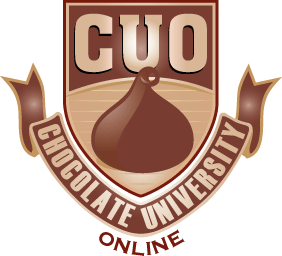Chocolate From The Past
Due to intense love of chocolate, more and more research were done just to trace back its history. While it’s great to just indulge in the goodness of your chocolate, it wouldn’t hurt to know how it made people in the past just as happy as we are now because of it.
Give credit where credit is due. That said, must be given to Fathers, specifically Dominicans, for having the Spanish appreciate chocolate. In 1544, they lured the court by preparing chocolate which was presented by a Kekchi Maya delegation of New World natives.
Because of faith, chocolate spread, making new regions of the world appreciate it. Europeans started to love it, so they made use of chocolate in Christian celebrations. They used chocolate to sustain different aspects of their lives, including physical, economic, as well as spiritual.
Chocolate progressively became a tool for adulation, which is offered for the greater glory of God. As a matter of fact, monks whipped up chocolate. They drank and hoarded it secretly. There was even a room mainly for chocolate drinking. Alphonse de Richelieu, cardinal of Paris, was privileged to be among the first ones to experience chocolate. There was a personal chocolate maker for him.
Chocolate was a reputed “road food” when the church had a mission to California. The thrill of chocolate experience traveled there through Franciscans like Father Junipero Serra. When he left Spain to fulfill his duties in the New World, he brought along with him some chocolates.
Unfortunately, storms made his ship stop at Puerto Rico. When the captain defaulted on his promise to feed them, a local Christian mission provided chocolate for sustenance. Serra reported: “For eighteen days we ate better than in any convent, all drinking chocolate every day.”
The best chocolatiers back then, known as mendiants, always made delicacies. These immortalize the mendicant (beggar) orders-Augustinians, Carmelites, Dominicans, and Franciscans-those that were serving the poor and depend mainly on donations for support. Dried fruits and nuts in the mendicant were symbols for the color of different monastic robes: raisins for Dominicans, hazelnuts for Augustinians, dried figs for Franciscans, and almonds for Carmelites.
Adapted from On the Chocolate Trail: A Delicious Adventure Connecting Jews, Religions, History, Travel, Rituals and Recipes to the Magic of Cacao, published by Jewish Lights.
Categories: chocolate articles Tags: chocolate background, Chocolate History, done, drinking, New World, published
Why Chocolate Is Associated With Acne
A study done at the Radboud University Nijmegen Medical Center in the Netherlands, involved collection of blood samples from seven participants before and after consuming exactly 48 g of chocolate on a daily basis. This was done consecutively for four days.
The chocolate that was eaten had approximately 30% cocoa. The blood cells collected were exposed to bacteria called Propionibacterium acnes.
These bacteria are supposedly a contributory factor for developing acne when they grow inside clogged pores. When such takes place, the pores become inflamed. It then ends up in the growth of Staphylococcus aureus, another type of skin bacteria that could worsen acne.
The blood cells created more interleukin-1b after the participants had chocolate. Interleukin-1b is described as a marker of immune system inflammation when they were exposed to Propionibacterium acnes.
The scientists claimed that these findings indicated that eating chocolate may boost the inflammation which can contribute to acne. Chocolate eating also gave a boost to production of another immune system factor, known as interleukin 10, after having been exposed to Staphylococcus aureus, according to a report at MyHealthNewsDaily.
Interleukin 10 supposedly lowers the immunity against microorganisms. That said, higher levels of interleukin 10 may lead to conditions that would allow bacteria to infect pimples, and aggravate them, said the researchers.
In spite of the many talks about chocolate and some other foods that are associated with acne, little is known as evidence to display they actually cause acne, said Dr. Kanade Shinkai, a dermatologist at the University of California, San Francisco School of Medicine, who has acne treatments as specialty.
Nevertheless, past studies have shown that high-glycemic foods, such as white bread, could be linked to acne. This is because they release sugar into the bloodstream quickly. While the acne problems of some people are impacted by diet, others’ acne issues are not influenced by diet at all.
This research was published in the journal Cytokine.
Categories: chocolate articles Tags: Acne, approximately, bacteria, CHOCOLATE, chocolate science, done, system





